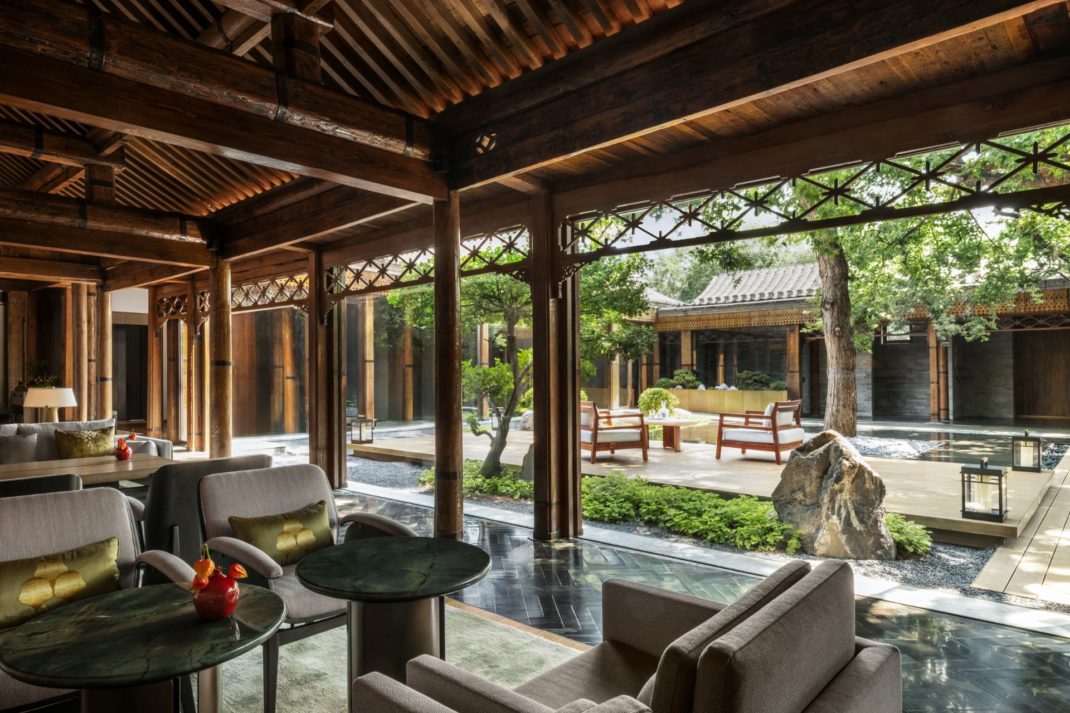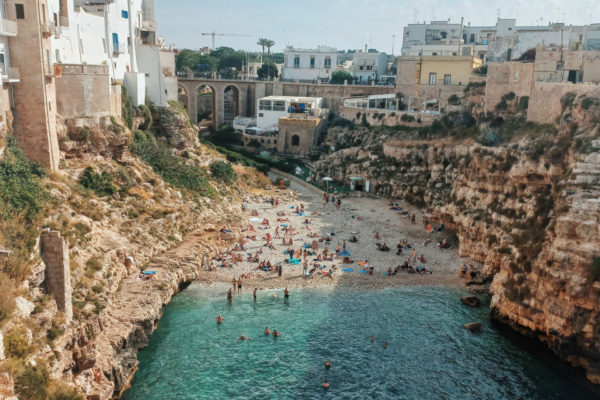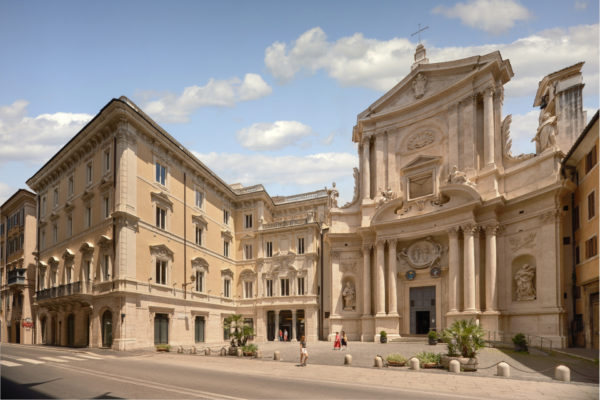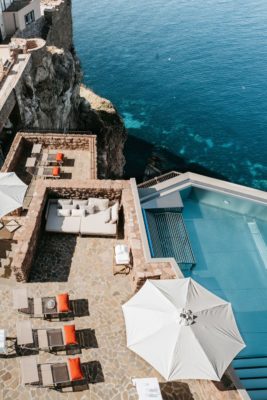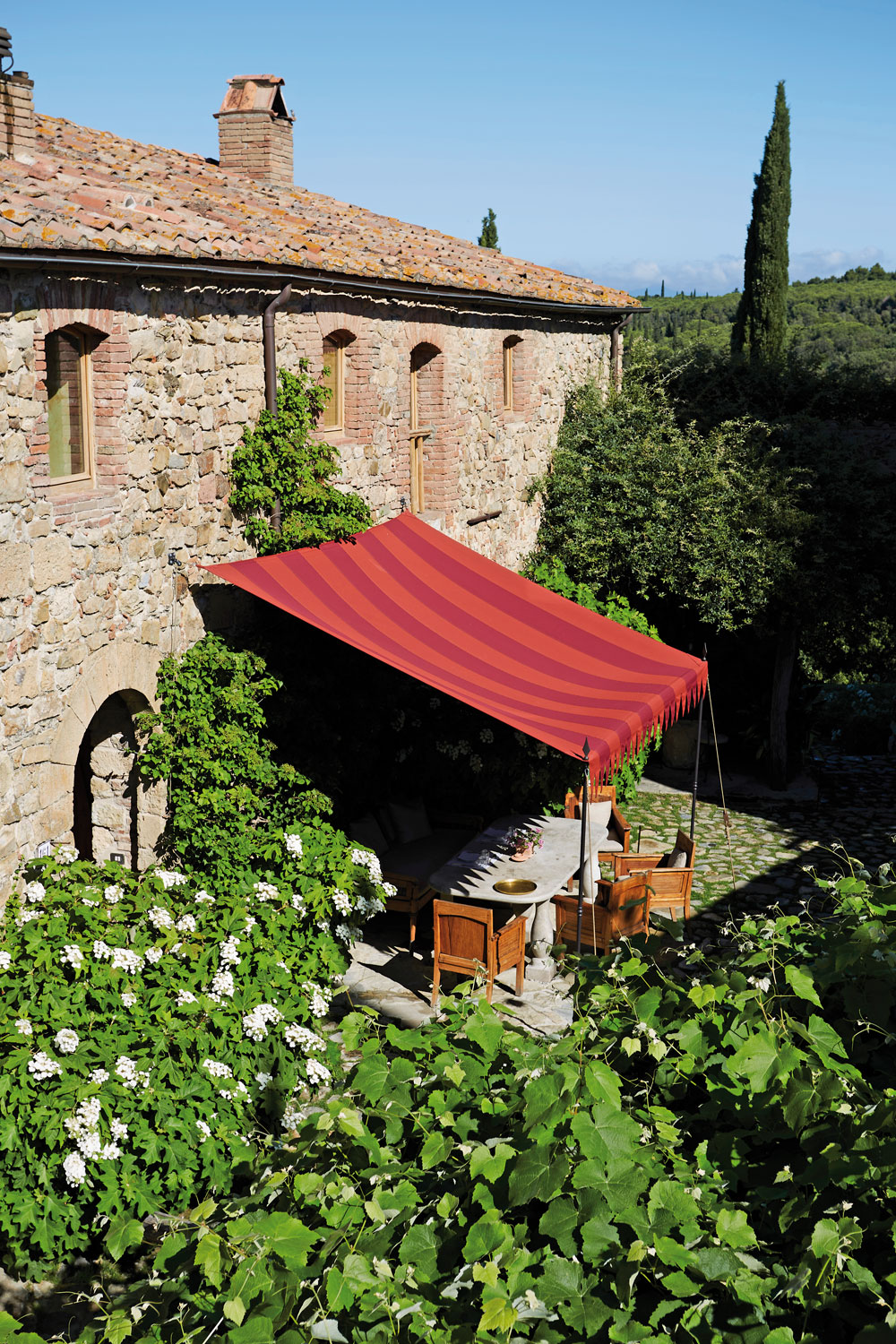
Is This Italy’s Most Idyllic Road Trip?
By
7 months ago
From Milan to the Amalfi Coast
For his first child-free holiday with his wife, Alex McIntosh chose an Italian road trip – planning a north-to-south itinerary that would take them from the sophistication of Milan to the glittering coast of the Amalfi.
An Italian Road Trip From Milan To The Amalfi Coast
Italy is a country that opens its arms wide to children, but it’s also secretly thrilling to leave them at home and slip into la dolce vita grown-up style. It took us a few years to realise this but here we are child-free, with the open road before us, a gleaming electric Polestar 2 as our ride, and as many lie-ins as possible for the next seven days. A north-to-south discovery of the country is planned: driving from the sophisticated elegance of Milan to the mesmerising beauty of the Amalfi Coast, via verdant Tuscany and historic Rome. Parental guilt is overcome and range anxiety is quelled (Polestar 2 offers around 400 kilometres of charge). Off we go on our bucket list Italian road trip.
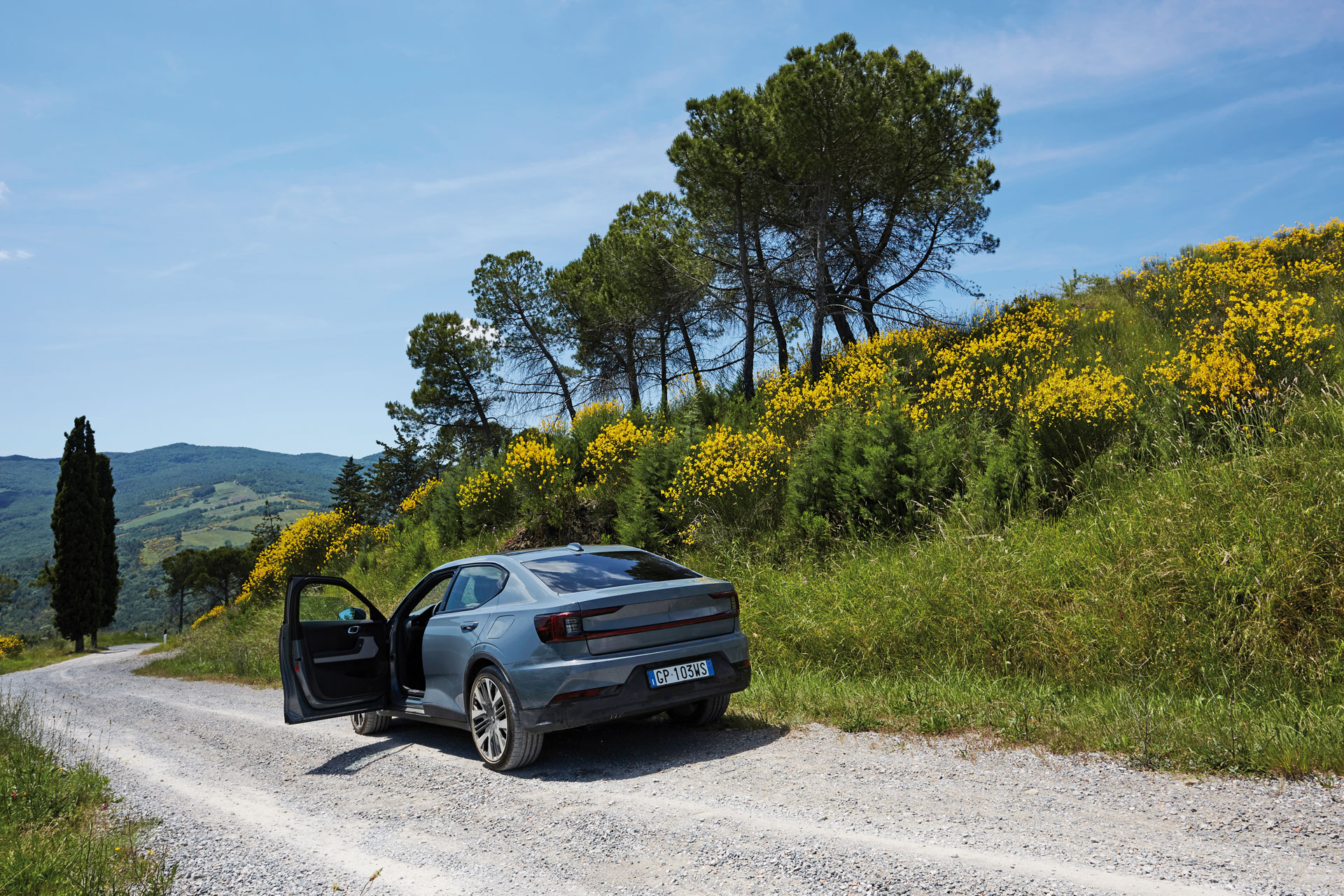
Milan
First stop Milan, staying at the seven-room Vico Milano. A hidden gem tucked away in a quiet courtyard behind a busy thoroughfare, Vico was once a fashion showroom (what else?). Four-poster beds on raised mezzanines and an eye-popping art, photography and textile collection elevate it into a sumptuous city crash pad.
Milan is Italy’s second-largest city and, of course, the country’s fashion capital. However short your stay, visit the Fondazione Prada, a gargantuan converted distillery reimagined by groundbreaking architecture practice OMA as a multidisciplinary exhibition, cinema and event space. We immerse ourselves in the primary colour world of Italian sculptor Pino Pascali then take a load off at Bar Luce, designed by film director Wes Anderson. Great coffee, great lunch, great people watching.
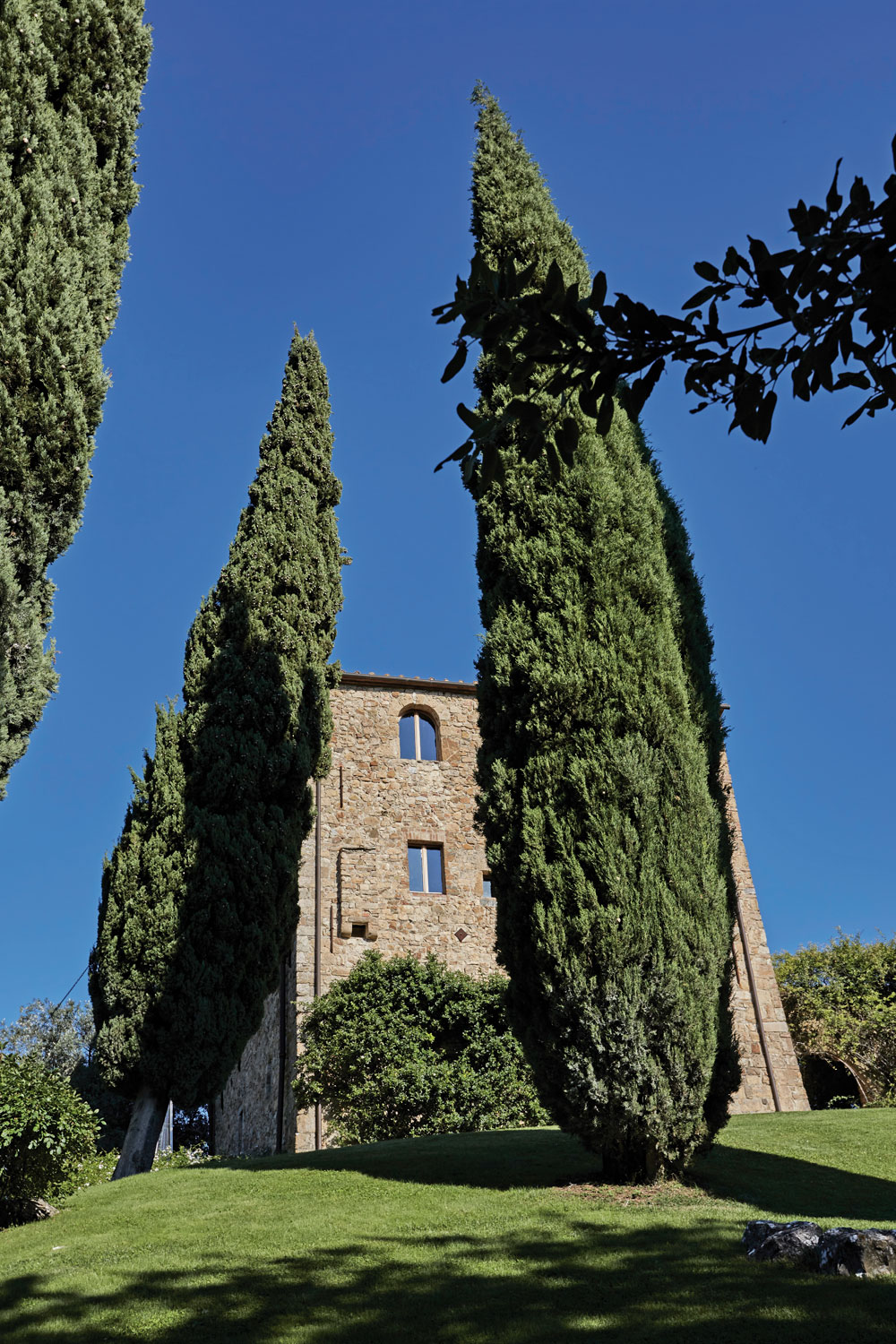
Castello di Vicarello
Leaving Milan behind and taking to the winding roads of Tuscany, aided by the Polestar’s Google-powered navigation and smooth road handling, we head south for around four hours to Vico Milano’s big sister, Castello di Vicarello.
Located in the little-known region of Maremma in southern Tuscany, sparsely populated but home to some of Italy’s finest vineyards and least frequented beaches, Carlo and Aurora Baccheschi Berti first came across this stunning but ruined hilltop castle in the 1980s. The couple were working in fashion and textiles, living between Milan and Bali, but relocated themselves and their three young sons to this idyllic, remote spot to begin a meticulous restoration project: first as a family home and later as a dreamy retreat for paying guests.
The ten suites, some in the castle itself and others in the auxiliary buildings that nestle in the beautifully landscaped hillside below, are each distinct and unique. The secluded Spa Suite has a steam room, sauna and cold plunge pool overlooking the valley, while the opulently antique Suite Vicario in the castle itself features a grandiose medieval stone fireplace, copper bathtub and a bed on stilts with steps on each side to help you clamber aboard. The castle as a whole reflects the family’s multicultural early life with an eclectic mix of art, textiles and furnishings, both traditional and modern.
Vicarello is the perfect place to unwind (and sleep); two marble pools, one heated, one not, suit bracing morning plunges and leisurely afternoon laps. Pre-dinner cocktails on the castle terrace are occasionally dramatised by a glimpse of a wild boar roaming in the forest clearings below. If you need more stimulation, there’s biking and hiking, truffle hunting (compete with the boars), wine tasting and cookery classes.
Rome
Three hours further south lies the Italian capital. Rome is not a place readily associated with calm or ease of parking. Romantic, historic and glorious, yes; relaxing, no.
The first city hotel in the exceptional Six Senses portfolio does offer solace and valet parking, though. Housed in an elegant Roman palazzo on Via Del Corso in the historical centre of Rome – the Trevi Fountain, Via Condotti and the Pantheon are steps away – it is the ideal place from which to explore, and also return to. Bivium, a relaxed all-day restaurant focused on organic and local ingredients with a Six Senses take on Italian classics, straddles the hotel lobby and internal courtyard. Try focaccia pizza with orange-scented pork neck and fennel cream from the wood-fired oven. A second restaurant, Notos, is opening later this year. It will doubtless be a hot ticket located on perhaps the best roof terrace in the city, overlooked by the imposing horsemen of the Vittorio Emanuele II monument and adjacent to the magnificent facade of San Marcello al Corso church, the renovation of which Six Senses sponsored as part of its commitment to neighbourhood regeneration.
Unsurprisingly – we are at a Six Senses, after all – the spa provides an extensive and eclectic menu of treatments and experiences, from biohacking meditation and Tibetan sound bathing, to sleep analysis and aerial yoga. However, the crowning glory is the Roman Baths, an underground haven of deep tranquility and restoration, hewn from muted stone. Follow the flow from the calidarium to tepidarium and end in the frigidarium: the route to a gladiatorial constitution.
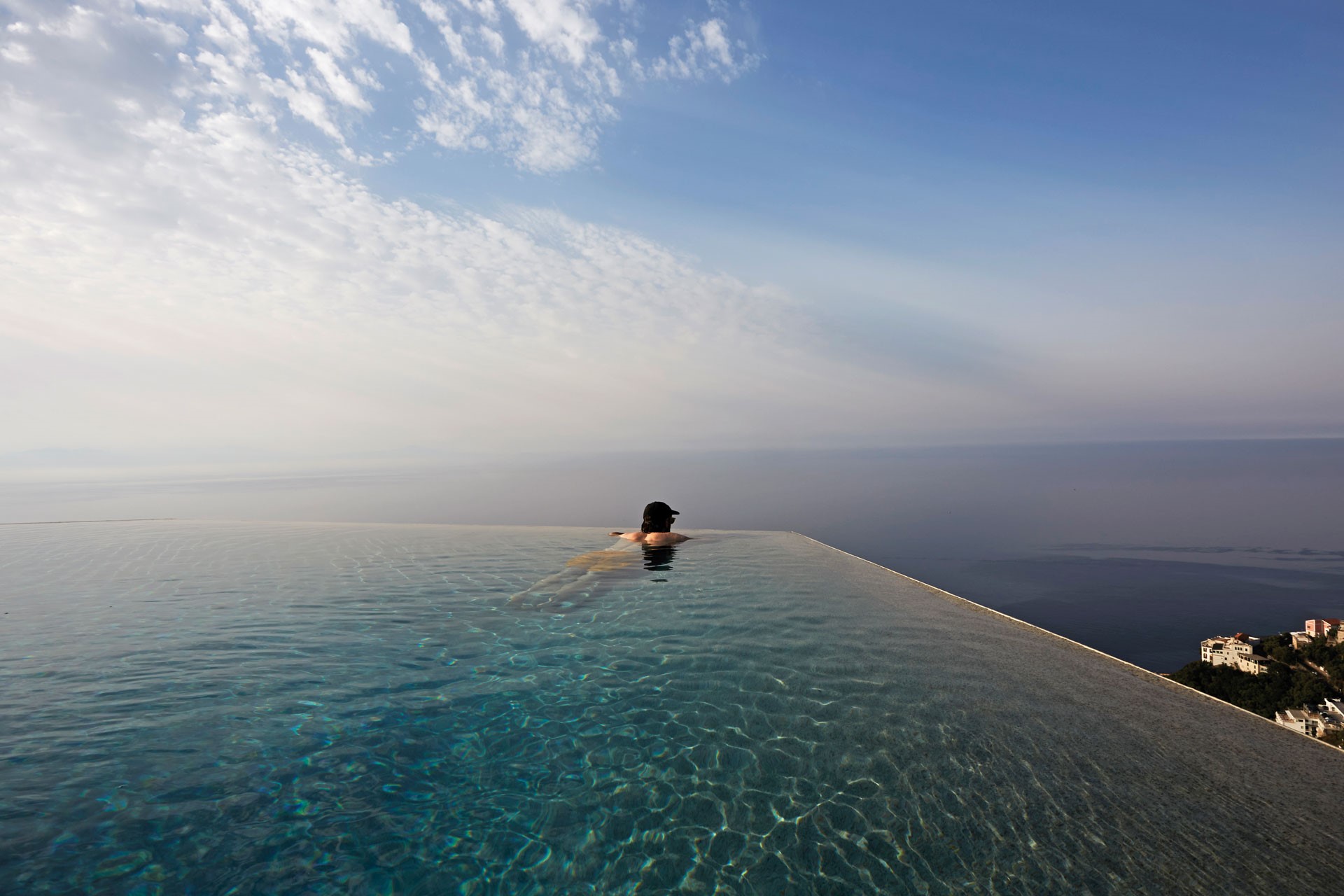
Amalfi Coast
Aristotle Onassis once said, ‘If you take a woman to the Amalfi and fail to seduce her, you are not a man at all.’ Lothario soundbites aside, it’s impossible not to fall in love with the region and its towering cliffs, sheltered coves and colourful towns. As we pass through Naples and Pompeii and navigate the hairpin bends and sheer drops to the dazzling sea below, the romance is tinged with terror but the Polestar keeps us on course.
Our final destination, Monastero Santa Rosa, occupies an imposing position on a rocky promontory between Amalfi and Positano. The hotel retains a strong sense of its monastic heritage, and each of the 20 bedrooms has an original vaulted ceiling and is named after a plant or herb once grown and used by the nuns.
Originally built in the late 17th century, Santa Rosa was first converted to a hotel in 1924 with the motto, ‘At each window, the sun. From each window, the sea’ – a perfect distillation of the experience as you walk the cool marble corridors punctuated with ecclesiastical antiques, abundant plants and contemplative sitting spots.
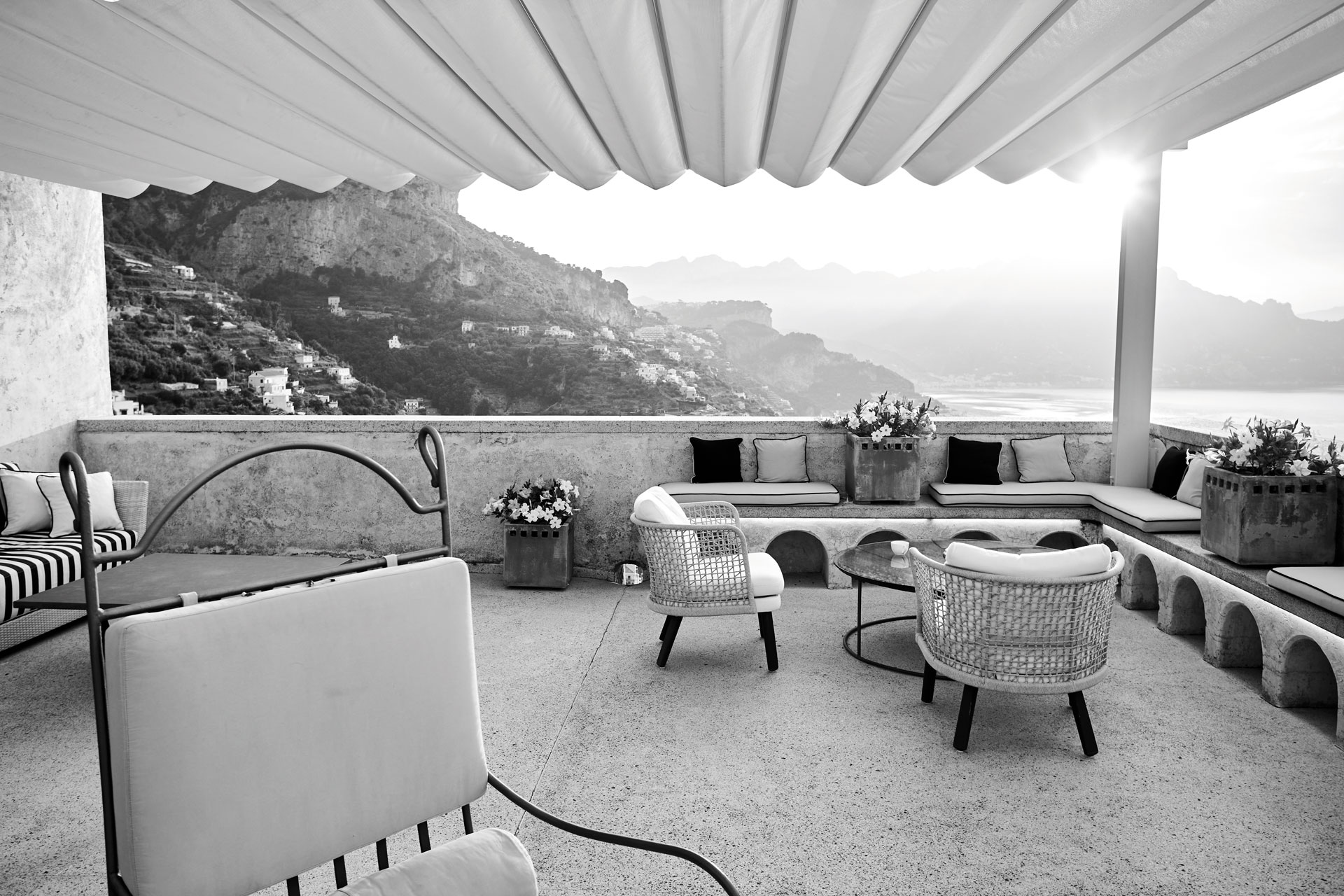
The famous Neoplitan pastry Sfogliatella Santa Rosa (a must for an indulgent breakfast treat) was first created by the nuns for their ailing Reverend Mother and this tradition of culinary innovation is very much alive and well today in the Michelin-starred restaurant. Chef Alfonso Crescenzo, an Amalfi native with an international CV, uses produce from the hotel’s organic gardens and from his own family farm Terre Lavatore in nearby Sarno. A jar of Terre Lavorate ragu pomodoro offered as a parting gift is a lovely touch.
You can also let the hotel charter you a boat to explore the caves and coves, or organise a guided hike to take in the staggering array of vistas along the many famous walking routes that circumnavigate this epic coastline. Santa Rosa is a place you won’t want to leave and a quick flick through the visitor’s book tells you that everyone who stays here feels the same.
But leave we must. Small children await. The glossy Polestar must be returned. Italy – we came, we saw, we slept. Thank you.
BOOK THIS ITALIAN ROAD TRIP: Vico Milano, doubles from £307. vicomilano.com; Castello di Vicarello, doubles from £890. castellodivicarello.com; Six Senses Rome, doubles from £953. sixsenses.com; Monastero Santa Rosa, doubles from £610. monasterosantarosa.com. Alex’s return flights had a carbon footprint of 775kg CO2e. ecollectivecarbon.com



